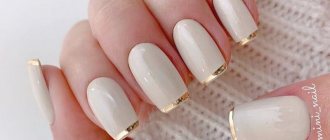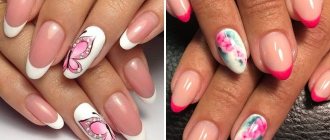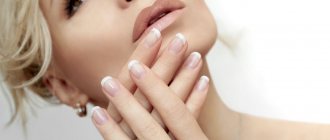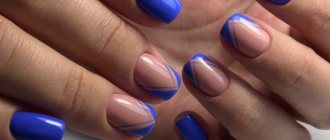French manicure is one of the most popular nail design options among women all over the world. Let's consider its main features, varieties, as well as methods of applying French at home step by step. You will see that there is nothing complicated about this.
A classic French manicure is the choice of most brides, because it will suit any wedding dress, perfectly complement the style of the newlywed, without significantly focusing attention on her hands.
The main features of French manicure

Jeff Pink
The history of French originates in the USA. In the second half of the 20th century, the founder of the famous nail industry, Jeff Pink, created a new nail design and invented varnishes for it. And he was helped in this by a Hollywood director, his friend, who often complained that make-up artists spent a long time correcting the artists’ manicures every day.
The new product in the nail industry immediately spread throughout the fashion world, but it enjoyed the greatest success among Parisian fashion models. As a result, the name “French” or “French” was assigned to this version of the nail design.
The classic French manicure consists of applying a transparent base or translucent varnish in pastel colors to the entire surface of the nail, and covering the end of the nail plate with white. The width of the white stripe depends on the length of the nails and your desire. French can be done on short and long, artificial and natural nails, using rhinestones and foil. Modern nail art even suggests replacing the white color of the strip with any other, brighter one.
Sensational developments from ORLY.
In the summer of 2014, the corporation released a unique summer collection of BAKED varnishes with vitamins, which has no analogues in the world. It is unique in that the pigments included in the varnishes have been subjected to heat treatment; thanks to this chemical reaction, the varnish fits perfectly on the nails, and the color has become as saturated as possible.

In 2015, the beloved brand presented a new product - a completely unique and innovative collection of EPIX coatings.
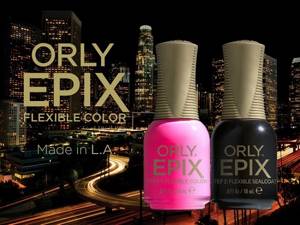
The two-step system combines the functions of nail polish and hybrid gel coatings. EPIX provides durable, flexible coverage thanks to its innovative shock-absorbing polymers.
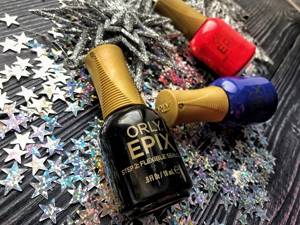
in the photo: elastic coating (black bottle), shades 29939 INDIE and 29936 FREESTYLE.

29939 INDIE
Both products (elastic color coating and elastic top coating) of the EPIX system complement each other and work together. 2015 was a fruitful year for new products - One night stand, which was created specifically for nail polish with glitter, appeared in the ORLY line of basic products.
And in 2022, a new product from ORLY appears on the beauty arena, thanks to which the idea of colored nail polishes changes. This is a professional color breathable care BREATHABLE™. Now girls don't need to take breaks from wearing polish. To restore your nails and restore their natural elasticity and shine, just use BREATHABLE™ from ORLY. The product incorporates the best properties of color coating and nail care.
The popularity of the ORLY brand has long crossed the borders of the United States. Its representative offices are located in 82 countries.
Are you familiar with the brand? Share your impressions in the comments =)
Varieties of French manicure
| Name | Description |
| Classic French | The most common, beautiful, durable and comfortable. The entire nail is covered with a base or translucent pastel varnish. White color is applied to the edge. |
| Colored, fan-french | The edge of the nail is covered separately from the nail plate with any bright shade. |
| French Millennium | Glitter or sand on the tip of the nail. |
| Twist French | The brightest. Different shades of varnish are used both for the entire nail plate and for its end. The main thing is the edge of the nail highlighted in a different color. |
| French with a pattern | A drawing is made on top of a classic French manicure or any other type. An excellent option for those with artificial and long nails. |
| Lunar French | Or it is also called reverse French. In this type of manicure, it is not the free edge that is painted over, but the hole at the base of the nail. |
| Decorative or custom jacket | Mix of different options for French manicure. |
Types and characteristics of French manicure
Home French: execution technology
With paper stencil strips
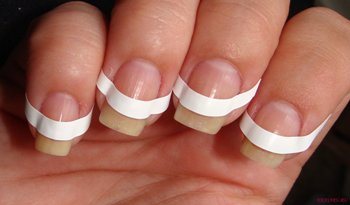
The easiest, highest quality and fastest way to make a French manicure at home is to purchase special stickers in the shape of a thin crescent; even a novice manicurist can handle them.
Apply the base to the nail and wait until it dries completely. Then apply a stencil to get the desired width of the white line and paint the remaining tip of the nail with white polish.
Do it yourself, without stencils
It is much more difficult to make a French jacket without a stencil. Getting a perfect white line takes a lot of practice. It will be easier to draw it by holding the brush across the nail rather than along it. You can correct the line with a cotton swab soaked in acetone.
Using stationery tape
Scotch tape replaces a special stencil for French manicure, but fiddling with it takes longer. Cut thin strips of tape and apply them after applying the base, paint the remaining edge of the nail, then remove the tape.
Whitening pencil
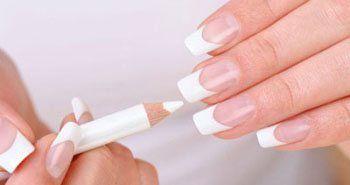
A new product in the nail industry is a whitening pencil for French hair. They paint not the outer, but the inner surface of the nail.
Before use, the pencil is moistened, then the overgrown part of the nail plate is carefully painted over. By the way, the most short-lived way to apply a French coat is to wash off the whitening pencil with plain water.
The men who changed the beauty industry forever
Eugene Rimmel
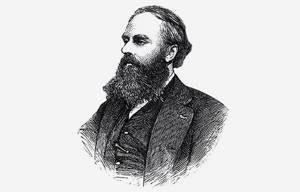
Eugene began his career at age 14 as an apprentice at his father's Rimmel perfume house. By 1830, the young man had become an experienced perfumer and a true visionary in the beauty industry. Rimmel invented the first mascara. In the 19th century, the product did not gain the popularity it deserved, as ladies preferred to decorate their eyes with eyeliner and left their eyelashes untouched. But Eugene's other products sold out with a bang. London's high society couldn't live without Rimmel personal care products, including soap, mouthwash and lipsticks.
In dictionaries, the word rimmel still means "mascara" in several languages, including Portuguese, Turkish, Romanian, etc. The English name mascara comes from the Italian maschera, which means "protective mask." History is silent about what the world's first mascara, which Rimmel presented to the world, looked like, but soon it had analogues.
Terry Williams

In 1913, chemist Terry Williams watched with interest as his sister Mabel got ready for a date and tried to darken her naturally light eyelashes. Terry came to his sister's aid: he mixed coal dust with Vaseline and pressed it into a small tile. After wetting a tiny brush with water, you could pick up some black paint on the brush and run it across your eyelashes.
After testing the mascara, Williams realized that millions of women around the world needed it and began offering the invention through mail order catalogs. However, sales were sluggish. His product was almost destroyed by the world's first ink, Eugene Rimmel, but cinematography saved the situation.
Hollywood actresses were delighted with close-ups with painted eyelashes. Mabel's sister soon got married, and Terry named the company after her as a wedding gift, combining the name of her sister Mabel and the word vaseline, which was part of the product. This is how one of the most successful cosmetic companies appeared - Maybelline.
Lawrence Gelb
During the height of the Great Depression, Lawrence Gelb worked as a chemist and traveled throughout Europe in search of a hair product that would become a bestseller in the American market. So he found a hair coloring process in which the dye penetrates into the hair shaft itself, and does not just color the surface.
The result exceeded all expectations: the hair looked more natural and became softer. Together with his wife, Lawrence brought the world's first tint shampoo, Clairol Oil Shampoo Tint home, to the United States and presented it to hairdressing professionals in 1938.
By 1950, he had improved the product formula, reducing the coloring process from five steps to one. The coloring took only 20 minutes and made the hair shiny, clean and soft, and the revenue of beauty salons that worked with this product increased by 500%. Lawrence changed the way consumers think about color forever.

Jeff Pink
Pink was born in Israel into a religious family. In the 70s, he discovered that there was a need in the market for nail care products. So he opened a small store in California, naming it in honor of his wife - Orly.
At that time, the only means for strengthening nails was the “Juliet Scarf” - a tiny piece of silk, which was used to strengthen clients’ thin nails with the help of glue. Pink invents a product based on artificial fiber - fiber and ironically calls it Romeo. It creates a barely noticeable mesh that covers the entire nail plate. So Romeo became the first product in the world that was applied to nails to strengthen them. Following the resounding success of Romeo was the success of the new product Ridgefiller - a product with talc that smoothes and evens out the surface of the nail.
Pink's Hollywood friends complained about the lack of a universal nail polish for any actress' outfit. Jeff Pink suggested using a white coating on the free edge of the nail. This is how the legendary “French manicure” appeared. The first name of this invention was Natural Nail.

Especially for American women, Pink also created a “variation on the theme” of the French manicure - the Beverly Hills manicure. Maximum natural pastel colors of the coating, without sharp transitions from the base of the nail to the free edge. So the smile line, which remains snow-white in the French version, is covered in a pink shade or shade of another pastel shade in the American version, so there is no sensation of a sharp transition. To this day, Jeff Pink remains the permanent owner and ideological inspirer of Orly developments.
Max Factor
A man who needs no introduction. Maximilian Abramovich Faktorovich was born on September 15, 1877 in the city of Zduńska Wola (territory of Tsarist Russia, now modern Poland). I grew up in a large family (more than 10 people), and was forced to work since childhood to help feed the family.
At the age of eight, Maximilian became a pharmacist's assistant, and at the age of nine, he became a cosmetologist's apprentice, performing small assignments. At fourteen he moved to Moscow and joined the Bolshoi Theater as an assistant make-up artist. After military service in the Russian army, he opened his own store in Ryazan, where he sold creams, blush, perfume and wigs. For several years he worked as a cosmetics specialist at the court of Nicholas II in the imperial theaters.

In 1904, Maximilian emigrated to America with his wife, daughter and two sons. There, the Americans immediately shortened his complex name to Max Factor. Four years later, the family opened a cosmetics store near the Dream Factory on Hollywood Boulevard and business took off.
Hollywood makeup experts are faced with a serious problem. The old fat-based theatrical makeup, which was applied in a thick layer, could not be used for filming. He looked "scary" on screen. The solution to the problem was makeup, invented by Max specifically for creating “on-screen” makeup. The new makeup had 12 shades and was in the form of a liquid cream in a jar, as opposed to the old one. With it, the actors, shot in close-up, looked more natural.
It was Factor who in 1920 introduced the term “make up” into widespread use instead of the term “cosmetics”, based on the meaning of the verb “to make up” - literally to draw or make a face. Max developed the principles of “Color Harmony” in makeup, which was that cosmetic products should be combined not only in color, but also match skin tone, hair shade, eye color and complexion. And in 1928 he invented makeup specifically for black and white films.
For him and for his contribution to the development of cinema, he was awarded an Oscar. After Max’s death, his business was continued by his sons, who made a huge contribution to the global beauty industry. It was with them that Tru Color Lipstick was created in 1940 - the first long-lasting lipstick that did not smudge. They are responsible for the development of PanStik makeup - facial makeup in a tube such as lipstick and Erace concealer, as well as the creation of a cosmetic line specifically for color television, which remains a standard to this day.

Serge Lutens
Born in 1942 during World War II in the French city of Lille. At the age of 14, at the insistence of his father, Luthans left school and began working as an assistant at the hairdressing salon Chez Besson. At the same time, he became interested in photography and experimented with staged photos of friends. In 1962, he moved from Lille to Paris and collaborated as a photographer and hair and makeup designer with the Paris editorial office of Vogue magazine. His work was successful and, in addition to Vogue, he did work for Elle, Jardin des Modes and Harper's Bazaar in the 1960s. In 1967, Lutens was commissioned by Christian Dior to develop the colors, style and visuals for the launch of the Dior cosmetics line.
In the early 1970s, American Vogue editor-in-chief Diana Vreeland called Lutens' work for the Dior line "a revolution in makeup." In 1980, Lutens signed a contract with the Japanese cosmetics company Shiseido and developed a visual style that became the brand's hallmark for many years to come. In just a few years, Shiseido has transformed from a local Asian brand into a global one.

He first created fragrances for the Shiseido brand, and later, in 2000, founded the Parfums-Beauté Serge Lutens brand to develop his own fragrances. He created the world's first woody fragrance for women, Feminite Du Bois, for which they opened an entire mono-boutique in the heart of Paris. It was Lutens who came up with the bob haircut that is still relevant today. In 2000-2004, the works of Serge Lutens were awarded several times with the FIFI Awards (The Fragrance Foundation - the perfume equivalent of the Oscar) for their original concept. In July 2006, Serge Lutens was awarded the title of Commander of the Order of Arts and Letters of France.
Pierre Guerlain
A Frenchman who received a chemical education in England, Pierre Francois Pascal Guerlain, opened a perfume house in 1828, which first existed as a pharmacy store. In his basement, Guerlain mixed his scents. The first men's fragrance was Imperial cologne, created specifically for Napoleon III Bonaparte in honor of his wedding. Guerlain's first fragrance for women was called "Soul of Flowers" - it was created by Pascal Guerlain in 1829 for his wife. Pierre François Guerlain died in 1864. After his death, prose writer and playwright N.E. Heinze will write about Guerlain as a modern Parisian alchemist who “found a means to restore youth and beauty and through this means to make gold for himself.”
The company was inherited by his sons Aimé and Gabriel Guerlain. Gabriel was involved in the financial component, and Aimé Guerlain was responsible for such achievements as the decomposition of a fragrance into three components (initial note, heart note and base note). It was Aimé who first combined the production of natural and synthetic ingredients in a fragrance, and also created the world's first unisex fragrance called Jicky in 1889. In total, since 1828, the Guerlain house has created more than 300 fragrances.

David McConnell
In 1886, American businessman David McConnell founded The California Perfume Company. The company's first product was perfume - five simple scents: violet, hyacinth, heliotrope, lily of the valley and white rose. The idea to start a perfume business came to David while he was selling books. To interest potential customers, he began to include perfume in orders. He soon realized that small bottles interested his clients much more than fashionable novels.
David developed the business based on personal and direct contact between seller and buyer, while betting on attracting women. At that time, American women had no opportunity to earn money, and they had to wait another thirty years before they could vote in elections. It was David who was one of the first to give women the opportunity to earn money, as well as look beautiful and well-groomed. On October 6, 1939, the company received its new official name - Avon, and by 1941 sales reached $10.8 million per year.
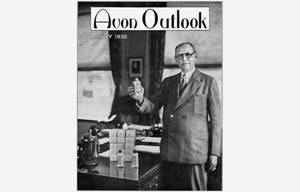
Frederick Brandt
A man who was not just a dermatologist, but a real visionary in cosmetology. Frederick Sheldon Brandt is known as a researcher, lecturer, author and radio host. It was thanks to Brandt and his experiments on himself that the world community learned about the effectiveness of anti-aging techniques using botulinum toxin type A (Botox) and fillers.
Thanks to his protocols and research, anti-aging drugs were legalized, and the Institute of Dermatological Research in Miami, founded by him, became the only authority trusted by the FDA (Food and Drug Administration). It is for her that Brandt approves new protocols for all global manufacturers of fillers, types of Botox, cosmetic lasers and active ingredients for cosmeceuticals. He was unconditionally trusted by his celebrity clients (Madonna, Stephanie Seymour), the market avidly read his books and called him “the king of Botox” and “the baron of collagen” behind his back.
At first, Frederick treated such statements with humor, but in the end he was forced to consult a psychotherapist for depression. In order for millions of women and men around the world to smile when looking at their young faces in the mirror, Brandt tried many drugs on himself and, of course, this does not go away without a trace. Soon the doctor's face became a source of ridicule among comedians. The last straw was the satirical ridicule of his activities in the image of one of the heroes of the series Unbreakable Kimmy Schmidt. On April 5, 2015, Brandt shot himself in his own home at the age of 65. The main advice that the doctor repeated to his clients was “you need to learn to enjoy age, to love yourself for who you are now.” .
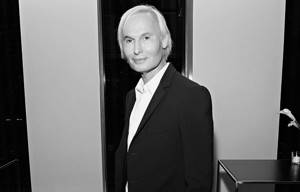
Frank Toscan and Frank Angelo
In 1984, two friends, one of whom was a professional makeup artist and photographer (Frank Toscan) and the owner of a chain of beauty salons (Frank Angelo), realized that there were no suitable decorative cosmetics for artistic photography on the American market. They decide to create a special line of professional decorative cosmetics. This is how the MAC company was born, which literally means Makeup Art Cosmetics. MAC is beginning to be appreciated by models and world celebrities such as Linda Evangelista, Sandra Bernhard, Missy Elliott, Diana Ross, Boy George, Liza Minnelli and many others.
After Frank Toscan and Frank Angelo created the first line of decorative cosmetics that was used in professional artistic photography, they realized that ordinary women also needed cosmetics that they could apply and use themselves without professional skills at home. “Cosmetics for everyone!” - this phrase became the motto of the M.A.S. company.

One of the founders, Frank Angelo, died during a botched surgery. After the death of his partner, Toscan left the company and founded an AIDS foundation with his relative, Vic Kesel. Vic was the chief chemist and biologist at MAC. Following the example of its creators, the new owners continued to support the AIDS Foundation. All profits from sales of the famous Viva Glam line were donated to help people suffering from the immunodeficiency virus. As a result of these fundraising, the fund has raised more than $128 million. Thus, two friends introduced the world not only to professional makeup, but also showed by their own example that beauty should save lives.
Currently, more and more men serve beauty, devoting their entire lives to it. It is not surprising that the founders of the largest beauty salon chains around the world are men. Beauty is, first of all, a business that ensures the stable development of the industry.
Join offline the audiovisual installation “Portrait of a Generation” on the occasion of BURO’s 10th anniversary.
— get an immersive experience. To buy a ticket
Tools for home french
You will need:
- Nail files with different abrasiveness (or your favorite)
- Cuticle remover (orange sticks are popular these days)
- Manicure tweezers and scissors
- Liquid for softening cuticles (remover)
- Small baths and a mixture that you want to add to the water when steaming your hands
- “Smile” stencils for French, tape or pencil
- Basic clear coat
- Fixer
- White or any colored polish for the edge of the nail
Choose long-lasting varnishes for the edge of the nail so that you don't have to touch up the color strip every day.
High-quality French at home: step-by-step instructions
- Preparation. Use a manicure file to give your nails the same shape and length. The best option for a French jacket is a delicate oval shape. On square and too long nails, French looks unnatural and rough.
- Softening. Steam your hands in a bath of warm water. Add a weak herbal decoction, special salt, a drop of essential oil - whatever you like best.
- Cuticle removal. Remove your hands from the water and pat dry with a towel. Apply remover to the cuticle, after half a minute, move it away with a stick or remove it with tweezers.
- Cleansing. When the hygienic manicure is completed, wash your hands, removing any remaining remover, and dry them thoroughly with a towel.
- Applying base and stripes. Cover your nails with the base color. Wait for this layer to dry. Apply white or other bright polish to the edge of the nail plate. If you don't know whether you can make a neat strip yourself, use pre-prepared stencils, cut strips of tape, or a whitening pencil.
- Consolidation. Cover your nails with clear sealer.

Brief instructions
This video walks through all the steps described above step by step.
You can also do a French manicure using gel polish. Read more in our other article>>
Short nails and French nails are friends forever
The ideal manicure option for short nails is a classic French manicure. It makes your fingers graceful and well-groomed. In addition, skillful application of decor visually lengthens the nail plate. It is better not to decorate French manicure on short nails with a lot of sparkles and stones, because a too rich design in this case looks vulgar.
According to ideal nail art criteria, the colored edge in a French manicure should not occupy more than a quarter of the base of the nail.
French manicure has been popular for over 30 years. It is ideal for any occasion: wedding, date or every day. Doing it correctly at home is inexpensive and easy. Buy a manicure set, French polishes, special stencils, whitening pencil or tape. You can practice drawing a thin and even line at the end of the nail by hand - after a while you will have excellent skills in making a French cut yourself.
More interesting articles:
Founder of the ORLY brand Jeff Pink.
Jeff is a very interesting person. Born in Israel into a religious family with four children. His parents were engaged in the clothing business, and since childhood, Jeff saw all the responsibility in his approach to business.
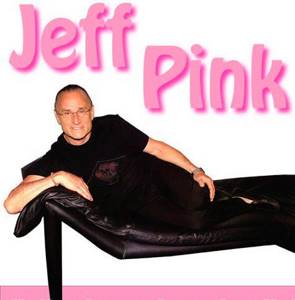
Jeff is an extremely ambitious person by nature. He began his career when only colored nail polishes existed in the nail business arena. There were no professional care products, “French manicure,” and especially no nail polish dryers. It was Pink's company that developed and created all these drugs and brought them to the market. By the way, the ORLY corporation has become a revolutionary and pioneer in the nail industry.





